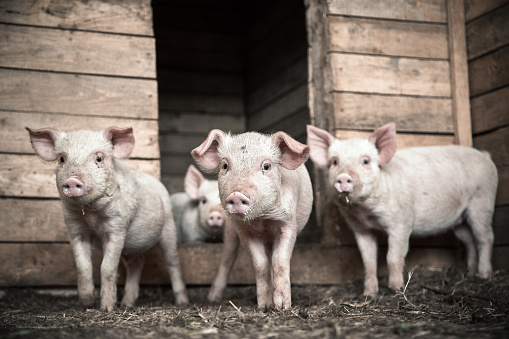In a move alarming to some food-safety advocates and current and former Agriculture Department officials, the Trump administration is set to hand over safety inspections of pork-processing plants to pork industry workers, reports the Washington Post.
The change, which would cut the number of federal inspectors by about 40 percent, could come as soon as next month.
“Under the proposed new inspection system, the responsibility for identifying diseased and contaminated pork would be shared with plant employees, whose training would be at the discretion of plant owners. There would be no limits on slaughter-line speeds,” the Post says.
The newspaper says the proposal “would accelerate the federal government’s move toward delegating inspections to the livestock industry” adding that a similar shift could soon take place in the beef industry.
The Post notes that the proposals for meat inspections “come as the federal government is under fire for delegating some of its aircraft safety oversight responsibilities to Boeing, which developed the 737 Max jets involved in two fatal crashes over the past six months,” killing nearly 350 people.
A former chief veterinarian with the USDA’s Food Safety and Inspection Service, Pat Basu, finds that parallel ominous.
“Look at the FAA. It took a year or so before the crashes happened,” says Basu. “This could pass and everything could be okay for a while, until some disease is missed and we have an outbreak all over the country. It would be an economic disaster that would be very hard to recover from.”
Basu strongly believes the responsibility for “identifying and removing live diseased hogs when they arrive at the plants” should remain with trained USDA veterinarians, the Post says.
The Post cites a report from the U.S. Centers for Disease Control and Prevention, which “estimates that about a half-million people become ill and 82 die each year from consuming pathogen-laced pork products.” It says industry statistics produce about 11 million tons of pork products annually, three-quarters of which is sold in the United States.
“The proposed inspection program has faced harsh criticism by government auditors and investigators,” the Post says.
The USDA conducted a trial of the proposed inspection changes at five pork-processing plants, and in 2013 the department’s inspector general issued a report, finding that “three of the five plants … had numerous health and safety violations.
“Safety records at those three plants were worse than those at hundreds of other U.S. hog plants that continued to operate under the traditional system,” according to the Post.
It cites data from the U.S. Bureau of Labor Statistics finding that: “Illness rates for people who work in the meatpacking business — including carpal tunnel syndrome and tendinitis — are 16 times as high as for workers in other industries.”
The Post quotes a statement from Sen. Richard Durbin (D-IL), the second-ranking Senate Democrat, as accusing the USDA of “rushing to approve a rule concerning slaughter rates on hog farms,” which “could jeopardize worker safety for a job that already comes with considerable risks and dangers.”



